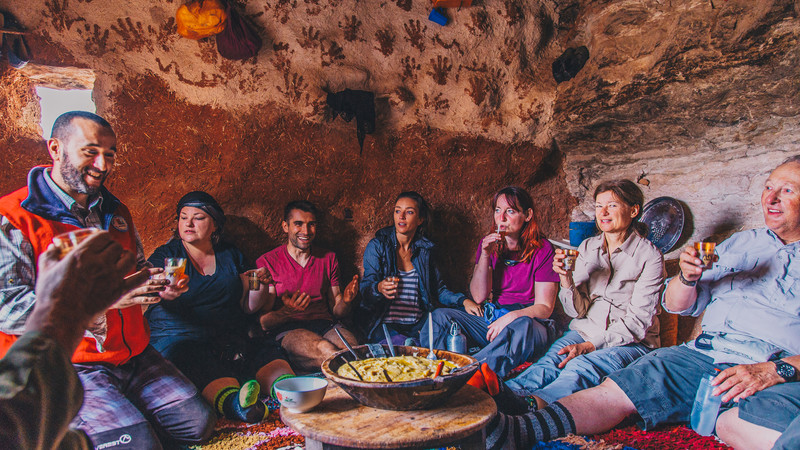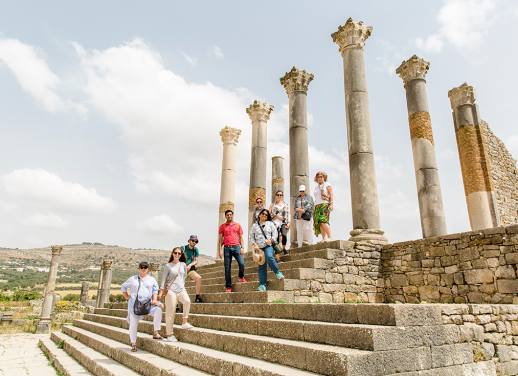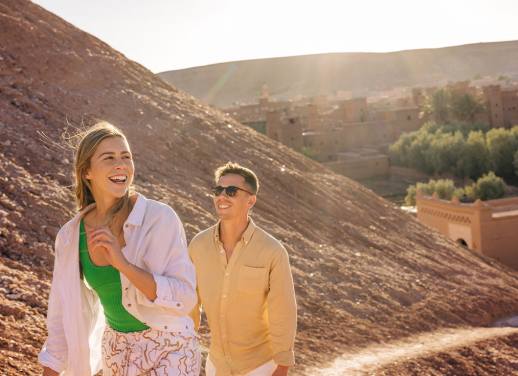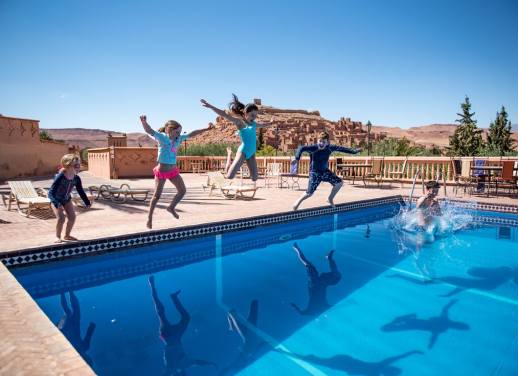Morocco is one of those incredible destinations that feels like multiple countries squished together into one glorious package.
There’s the long, ragged coast with its boho towns and soaring sea walls. There’s the crazy cities where alleyways twist and turn, revealing ancient secrets and hidden gems. And then, in the interior are the spectacular Atlas Mountains that only succumb to the rolling carpet of sand that is the Sahara.
Amongst it all is an endless array of accommodation, offering experiences as rich and as diverse as the landscape itself. Staying in uniquely Moroccan accommodation is the cherry on top of your adventure ice cream. But if you’re not sure of the difference between a gite and a riad, or you want a desert camp experience but are too shy to ask about the toilet situation – we’ve got you covered with our beginners’ guide to Moroccan accommodation.
Here’s what to expect:
1. Riads
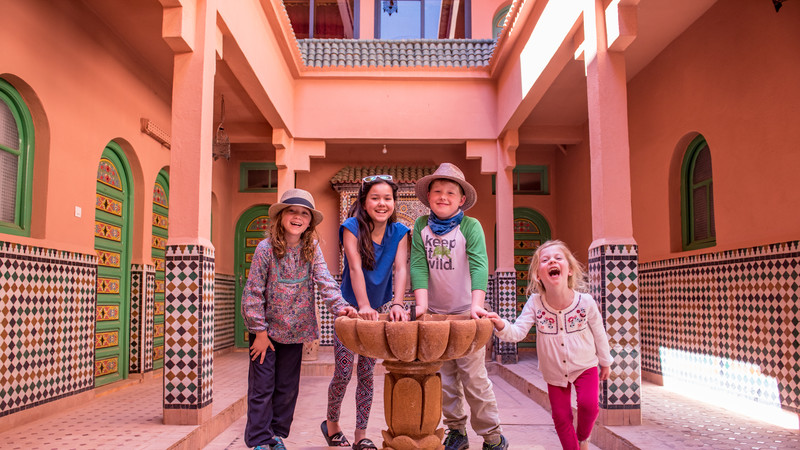
The fountain of youth?
If you’ve ever wanted to know what it’s like going down the rabbit hole, then staying in a riad is a good start. This classic Moroccan housing usually isn’t obvious from the street; it will simply look like a door in an alleyway wall. But inside you’ll find magic. These townhouse-style buildings soar up usually two or three floors around a central garden, often with a fountain. Riads are little pockets of oases that feel a world away from the busy streets of the medinas. Rooms can be fairly exotic, traditionally decorated with wooden door and window frames, and mosaic artwork. Breakfasts are normally served downstairs or in the garden, but the best spot in the house is on the rooftop where you can watch the world in action below and listen to the call to prayer echo through the city.
EXPLORE OUR RANGE OF SMALL GROUP ADVENTURES IN MOROCCO NOW
2. Gites
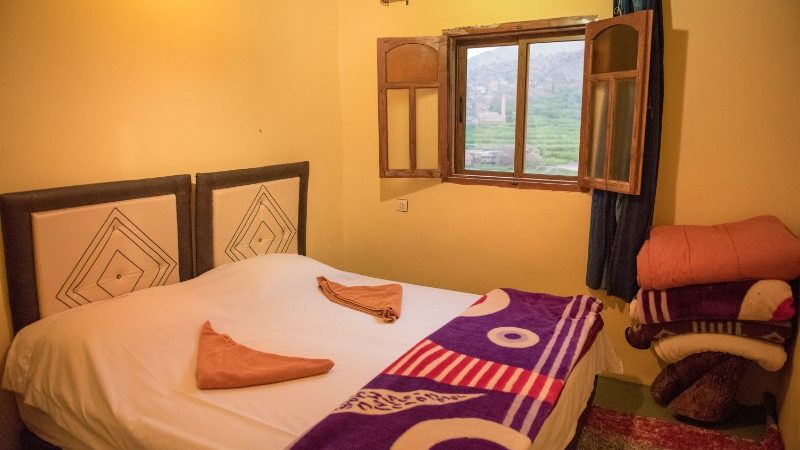
A gite homestay in the Atlas Mountains.
Out of the city and into the mountains you’re more likely to stay in a gite. This is a traditional Berber-style mud-brick building. They’re basic but half of their charm comes from their simplicity. Low ceilings, traditional Berber artwork and locally made furniture all add to the rustic mountain vibe. Despite their simplicity, you’ll still have all the essentials with electricity and bathroom facilities (sometimes shared). Meals are served in a common room with everyone seated at a long wooden table and you’ll often have the opportunity to share a meal or a mint tea with a local family.
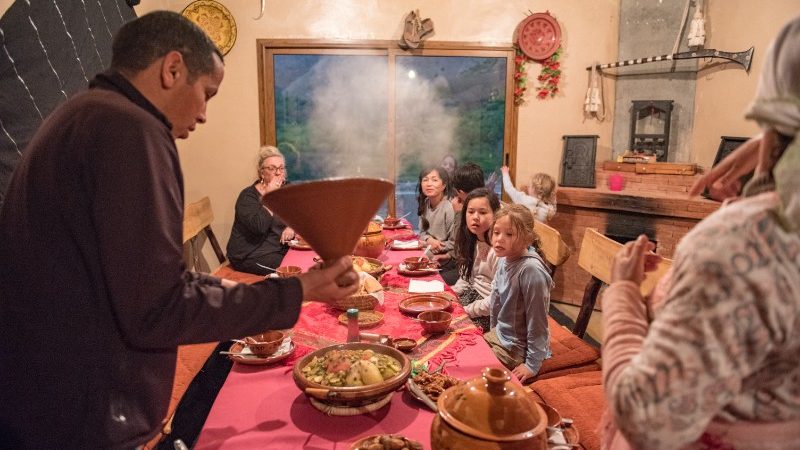
Sitting down to dinner at our homestay.
RELATED: WHAT IT’S LIKE TO TRAVEL IN MOROCCO DURING RAMADAN
3. Desert camps
Imagine dining out, in the Sahara, under a blanket of a billion stars. Just you, your travel buddies and some new Moroccan friends. Desert camps bring you a connection to the earth that your mind will travel back to again and again once you return to the big city lights.
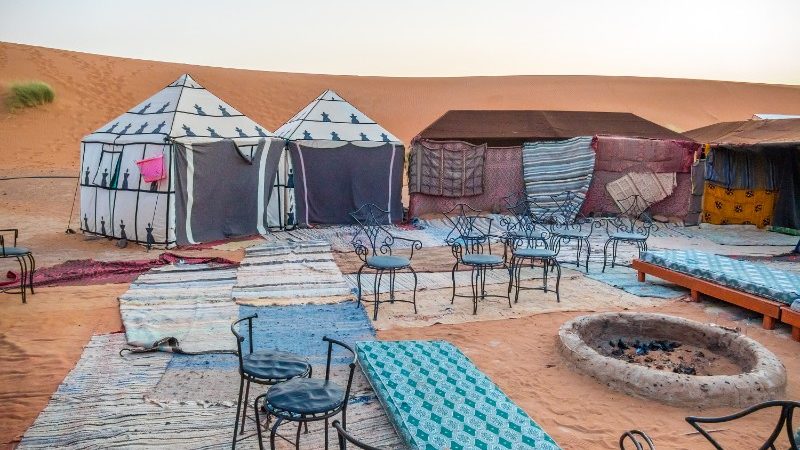
Desert camping in the Sahara. Image by Elzbieta Sekowska
In terms of facilities, desert camps range from basic all the way to luxurious. Basic camps are usually several tents set up in a circle. They have big entrances and are tall enough to stand up in. These are seriously big tents and even though you will share with several other travellers there’s plenty of room for everyone. With comfy beds and floors decorated with layers of carpets, even basic feels like glamping. Toilets are usually a short walk from the tents and, although there may not be running water, you’ll be given bowls of water, soap and hand sanitizers to freshen up with. Electricity is usually not available, but lamps will light the way in the evening.
SUBSCRIBE TO INTREPID’S NEWSLETTER FOR TRAVEL TIPS, STORIES, OFFERS, GIVEAWAYS & MORE
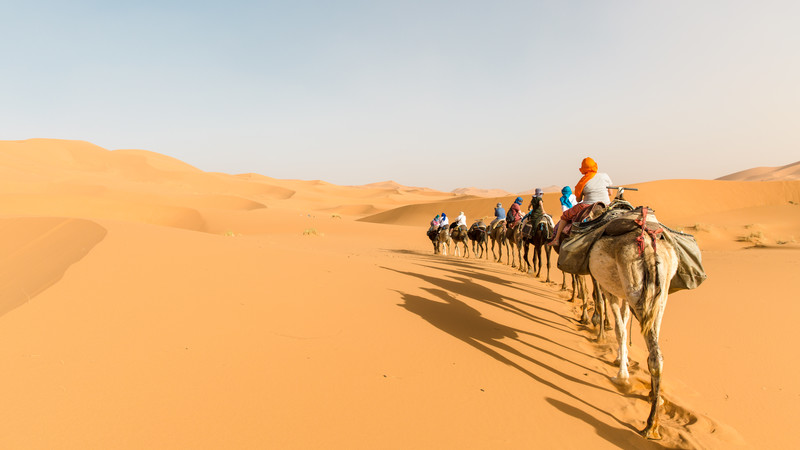
A different kind of train.
The more luxurious camps are set up in a similar way, around a circle, but come with bigger beds, and more furniture. They usually have their own private shower and toilet – although these are still fairly basic.
What every camp has in common is the atmosphere. Sitting around a campfire at night, listening to Bedouin stories, drumming and stargazing are unforgettable experiences.
CAMP IN THE SAHARA ON OUR 13-DAY MOROCCO UNCOVERED ADVENTURE
4. Nomadic camps
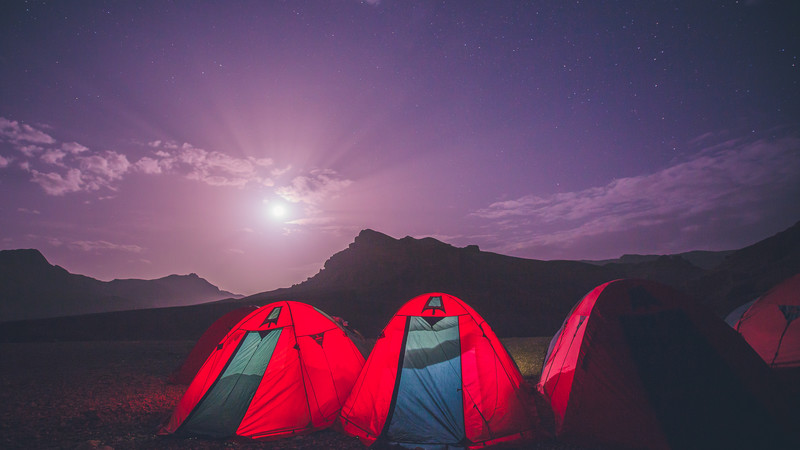
Camping with the Berber nomads.
Nomadic camps are the real deal. The nomads set up in groups of tents near a source of water, along routes their families have followed with the seasons for generations. These little village-like camps have areas where the animals can be locked up for the night, an area for the local women to gather and prepare meals, and basic tents and facilities for the lucky travellers who get to share in this unique lifestyle for a night or two.
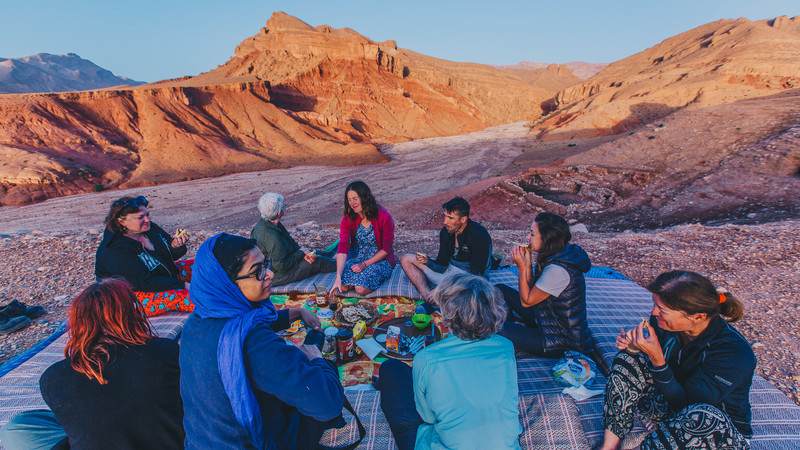
Our group dinner!
WALK WITH BERBER NOMADS ON OUR 8-DAY EXPEDITION
5. Overnight trains
Back in the modern world, overnight sleeper trains are double winners – you can sleep and travel at the same time. Travellers share a lockable couchette with four berths that can be converted to seats or beds. Pillows and blankets are provided, as is air-conditioning; but be warned – it can still get warm inside during the summer months. There is a shared toilet at the end of the carriage, and a food and drink cart that comes around but most travellers choose to bring their own for the journey.
RELATED: EVERYTHING YOU NEED TO KNOW ABOUT A NIGHT (OR TWO) ON AN OVERNIGHT TRAIN
Now that you’ve got the low-down on bedding-down in Morocco, it’s time to make those starry night dreams a reality. Whether you’re coastal, city-side, mountain-bound or in the heart of the sandy Sahara, you can be sure that Morocco’s accommodation will be a huge part of your adventure.
Interested in an adventure to Morocco? Start exploring our range of small group adventures now.

